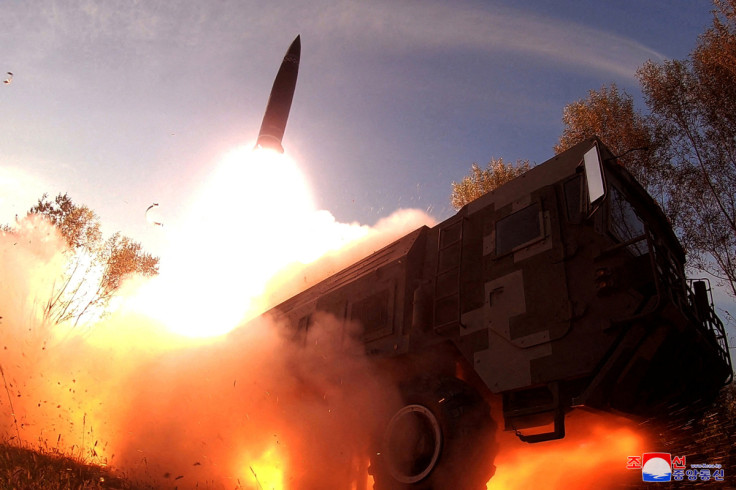North Korea Warns Of 'More Powerful' Response To Joint US-South Korea Air Drills
KEY POINTS
- U.S.- South Korea drills will feature around 240 warplanes conducting about 1,600 sorties
- North Korea's underground nuclear test tunnel is reportedly prepared for the seventh test
- Pyongyang recently passed a law enshrining the right to use preemptive nuclear strikes
As the U.S. and South Korean forces on Monday started their five-day large-scale joint air exercise involving 240 military aircraft, North Korea warned Tuesday that it could stage "more powerful follow-up measures."
Pyongyang denounced the ongoing combined air drills by the allies, called Vigilant Storm, as "ceaseless and reckless" military provocations.
A spokesperson of North Korea's foreign ministry termed the exercise as "a war drill for aggression mainly aimed at striking the strategic targets of the DPRK in case of contingency in the Korean Peninsula," South Korean news agency Yonhap News Agency reported on Tuesday. DPRK is the acronym of North Korea's official name, the Democratic People's Republic of Korea.
Warning of "more powerful follow-up measures" if the U.S. continues its military drills, the report added that Pyongyang is "ready to take all necessary measures for defending its sovereignty, people's security and territorial integrity from outside military threats."
North Korea's warning comes amid growing speculation that Pyongyang is all set to conduct its seventh nuclear test soon.
"If the US does not want any serious developments not suited to its security interests, it should stop the useless and ineffective war exercises at once. If not, it will have to totally take the blame for all the consequences," the North Korean foreign ministry statement continued.
The U.S. and South Korea resumed large-scale military joint drills after suspending them in past years. Vigilant Storm, which started Monday, will run round the clock till Friday and will feature about 240 warplanes conducting about 1,600 sorties.
The latest joint drill will involve 100 U.S. military aircraft, including F-35B stealth fighters, EA-18 electronic warfare aircraft, KC-135 tankers and the U-2 high-altitude reconnaissance aircraft.
South Korea is participating with 140 planes, including F-35A stealth fighters, F-15K jets and KF-16 jets.
The Royal Australian Air Force is also participating in the joint exercise and has deployed a KC-30A multirole tanker transport plane to practice aerial refueling.
In recent months, North Korea has ramped up its weapons testing and launched more than 40 ballistic missiles, including developmental intercontinental ballistic missiles and an intermediate-range missile that it fired over Japan.
Meanwhile, the U.S., South Korea, and Japan have been closely monitoring North Korea's Punggye-ri nuclear test site where Pyongyang conducted all six of its underground nuclear tests between 2006 and 2017.
Intelligence reports say that preparations at the site's underground nuclear test tunnel are complete for the seventh test.
North Korea recently passed a law enshrining the right to use preemptive nuclear strikes to protect itself. Under the law, Pyongyang said it will carry out a preventive nuclear strike "automatically" and "immediately to destroy hostile forces," when a foreign country poses an imminent threat to the country and its dictator, Kim Jong-un.

© Copyright IBTimes 2025. All rights reserved.






















